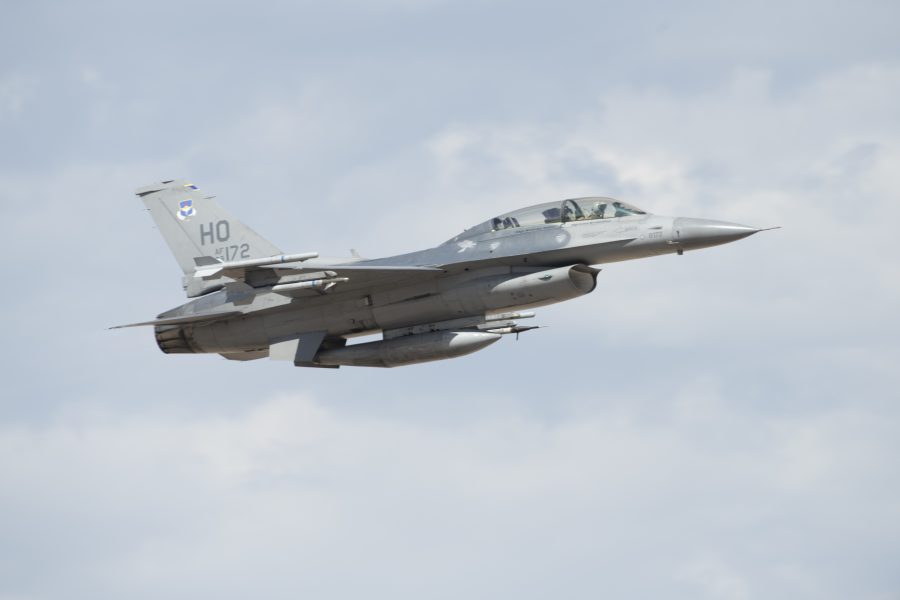The Air Force revamped its F-16 Basic Course following a 2017 incident where an inexperienced student pilot strafed the wrong target and killed a military contractor.
Now, students must fly their first nighttime close air support sortie with an instructor pilot in the rear seat of a two-person F-16D. If a two-seat aircraft is not available, the student will practice their first solo strafe attack without ordnance “while observed from close proximity by the instructor,” Air Education and Training Command spokeswoman Capt. Lauren M. Woods told Air Force Magazine.
On Jan. 31, 2017, Charles Holbrook, a retired master sergeant and former tactical air control party Airman, was struck in the head with a 20mm round from an F-16’s Vulcan cannon when a student mistook him and cars for a target during a nighttime training mission at the Red Rio range outside of Holloman Air Force Base, N.M. He died at a hospital later that night.
An accident investigation board found that pilot error caused the mishap, but also said the instructor pilot failed to properly supervise the mission. The teacher’s vague, yet “overaggressive” direction significantly contributed to Holbrook’s death.
The Air Force’s new policy highlights “the requirement for very diligent pre-planning and execution of tactical scenarios with both students and ground parties in the range space,” Woods said. “This is a special-interest item briefed before every student sortie during the CAS phase.”
Holbrook’s widow sued the Air Force for $24.6 million, alleging the service was negligent in hiring, training, and supervising student and instructor pilots and joint terminal attack controllers. The Air Force recently settled with the family for an undisclosed sum.
“We also met with A-10 schoolhouse personnel from Davis-Monthan Air Force Base, Ariz., to review A-10 targeting pod courseware to improve F-16 ground training. This allowed us to capitalize on existing video, content, and instructional techniques for courseware to improve training for students on CAS,” Woods wrote.
